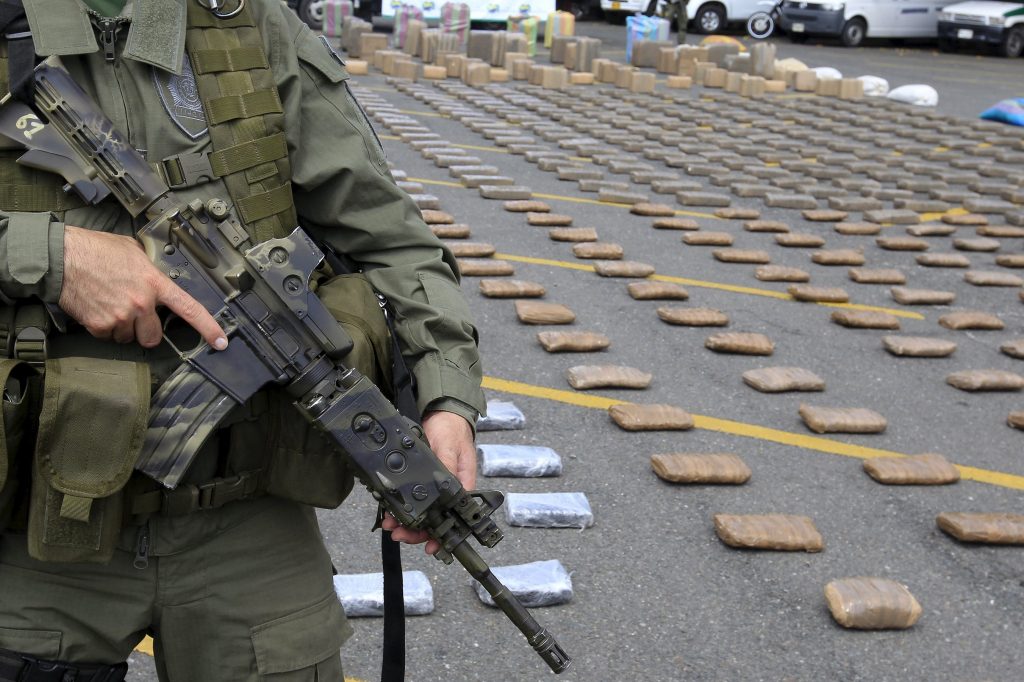Reuters photo
By
Ricardo Swire
Tropical islands on Caribbean Sea routes are victims of geography. High-volume cocaine trafficking endeavors through the Caribbean’s isolated group of Barranquilla, Cartagena, San Andres and Santa Marta Islands demonstrate Colombian drug cartels’ relentless use of strategic offshore centers.
Favorite San Andres Island is one hundred and ten kilometers, or three hours by go-fast boat, from Nicaragua’s coast. An overnight voyage arrives on the Mexican coast.
In 2016 San Andres Island’s population was seventy-seven thousand. Previously a vibrant fishing community, recent intelligence reports calculated between five hundred and eight hundred locals especially from Providence perform roles as mini-bosses, assassins, extortionists, lookouts and messengers for Colombian Drug Trafficking Organizations (DTOs). A former Cali Cartel capo owned San Andres’ luxurious Sunrise Beach Hotel. Colombia’s internal security records note names of at least fifty-five San Andres’ police and Navy members dismissed for collaboration with drug traffickers.
Urabenos Cartel associates manage “micro-trafficking” activities on San Andres Island. Transnational migrant smuggling organizations, transporting human cargo to America, pay the Urabenos transit tax. San Andres’ “foot soldiers” earn US$489 base salary, “Transporters” negotiate individual wages. The Island’s peculiarity is rocky coastline and reefed approaches. San Andres is also strategically located between Colombia’s mainland and Central America, only locals know safe entry and exit routes amid the reefs and shoreline. Recruited boat Captains are remunerated no less than US$12,000 each voyage, a crew member paid between US$3,400 and US$4,100 per trip.
San Andres’ transiting cocaine transfers from Colombia’s Cartagena and Barranquilla port cities. On one occasion a combined US Drug Enforcement Administration (DEA)/Columbia National Investigative Police or DIJIN operation dissected an Urabenos cartel network operating on Barranquilla, Cartagena, San Andres and Santa Marta Islands. Initially a DEA Confidential Informant (CI) provided agents with select drug traffickers’ personal telephone contact lists.
Colombia’s DIJIN was given copies and electronically intercepted communications. Six drug trafficking operations were monitored. Four Urabenos shipments transporting two metric tons of cocaine intercepted, four metric tons allowed to arrive. The multi-national law enforcement taskforce later detained one Costa Rican female and eight San Andres’ nationals. Prior to arrest, the Urabenos San Andres’ residents spoke creole to avoid attention.
The capo of San Andres Island’s trafficking syndicate coordinated his illegal striving from Atlántico department in northern Colombia. Since 2010 Urabenos cartel emissaries were tactfully positioned on San Andres. In 2011 Colombian National Police officers conducted nine operations on the Island. In 2013 the Urabenos cell maneuvered to seize control from rivals Rastrojos Cartel aka BACRIM and Los Paisas.
Ricardo Swire
Ricardo Swire is the Principal Consultant at R-L-H Security Consultants & Business Support Services and writes on a number of important issues.



No Comments Yet!
You can be first to comment this post!